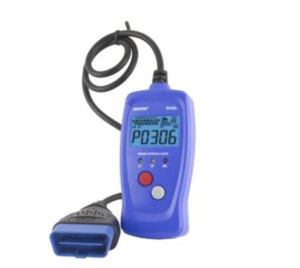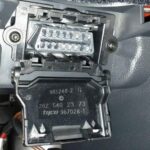When your Chevy displays the OBD2 code P0125, it signifies a problem with the engine’s warm-up system. Specifically, it indicates that the engine coolant temperature (ECT) hasn’t reached the required temperature for closed-loop operation within a specified time. This article delves into the causes, symptoms, and potential fixes for the Chevy OBD2 P0125 code.
 alt
alt
Understanding Chevy OBD2 Code P0125
A car’s engine operates in two modes: open loop and closed loop. In open loop, the engine runs on pre-programmed settings, ignoring sensor inputs. Once the engine reaches operating temperature, it switches to closed loop, relying on sensor data, including the ECT sensor, to adjust the air-fuel mixture for optimal performance and fuel efficiency. The P0125 code indicates a problem with this transition, suggesting the engine isn’t warming up as expected. This code often appears alongside other codes like P0126 or P0128, which can help pinpoint the issue’s root cause.
Common Causes of P0125 in Chevy Vehicles
Several issues can trigger the P0125 code in a Chevy. These include:
- Faulty ECT Sensor: A malfunctioning ECT sensor can send inaccurate readings to the engine control module (ECM), leading to the P0125 code.
- Low Coolant Level: Insufficient coolant can prevent the engine from reaching the required temperature.
- Coolant Leaks: Leaks in the cooling system, whether in the radiator, hoses, or engine block, can cause low coolant levels and trigger the code.
- Malfunctioning Thermostat: A stuck-open thermostat can prevent the engine from reaching optimal operating temperature. Conversely, a stuck-closed thermostat can cause overheating.
- Wiring Issues: Damaged or corroded wiring connected to the ECT sensor can disrupt signal transmission.
- ECM Problems: In rare cases, a faulty ECM can be the culprit.
Symptoms Associated with P0125
While the check engine light illuminating is the primary indicator, other symptoms might accompany the P0125 code:
- Poor Fuel Economy: The engine running in open loop consumes more fuel.
- Hesitation or Stalling: Inconsistent engine performance due to incorrect air-fuel mixture.
- Engine Overheating: Potential for overheating if the underlying cause isn’t addressed promptly.
- Failed Emissions Test: The P0125 code can prevent passing an emissions test.
Diagnosing and Fixing the P0125 Code
Resolving the P0125 code often involves a systematic approach:
- Check Coolant Level: Ensure the coolant level is within the recommended range. If low, refill and inspect for leaks.
- Inspect Thermostat: Verify the thermostat is functioning correctly and opening at the designated temperature.
- Test ECT Sensor: Use a multimeter to test the sensor’s resistance and voltage output. Compare readings with manufacturer specifications.
- Examine Wiring: Check for damaged or corroded wiring in the ECT sensor circuit.
- Use a Scan Tool: A professional-grade OBD2 scan tool can provide more detailed data and pinpoint the problem area. Analyze live data from the ECM to assess sensor readings and system performance. Clearing the code and monitoring if it returns is also helpful.
Addressing the P0125 Code is Crucial
Ignoring a P0125 code can lead to more severe engine problems and reduced fuel efficiency. While some drivers might experience no noticeable driving issues initially, addressing the underlying cause promptly prevents further damage and ensures optimal vehicle performance. If the diagnostic steps outlined above don’t resolve the issue, consulting a qualified mechanic is recommended. They possess the expertise and tools to diagnose and repair complex engine problems effectively.
